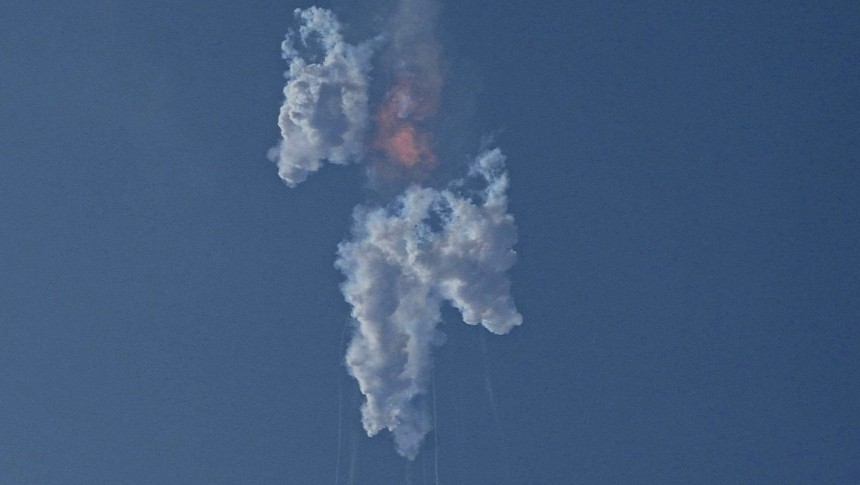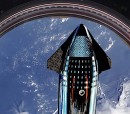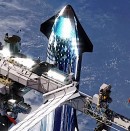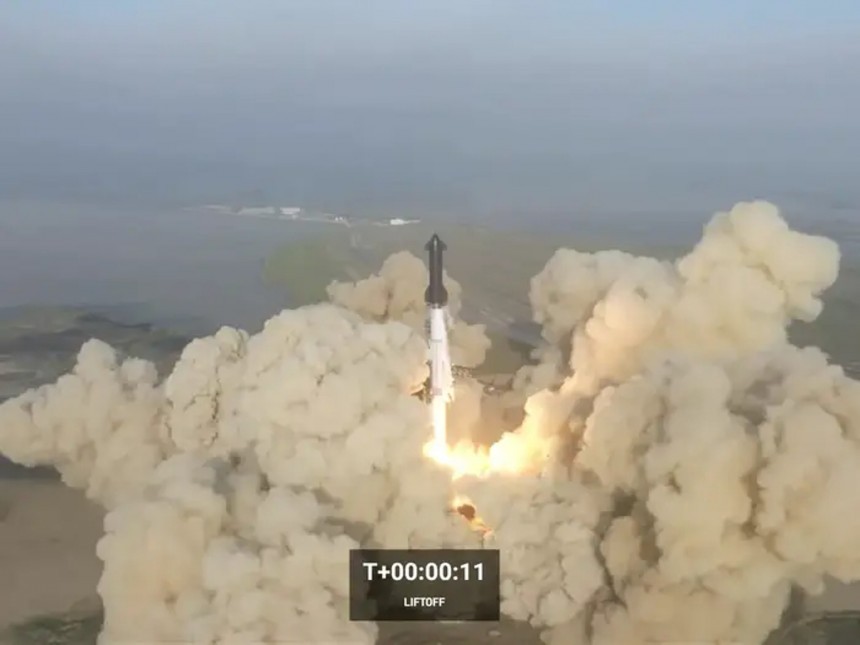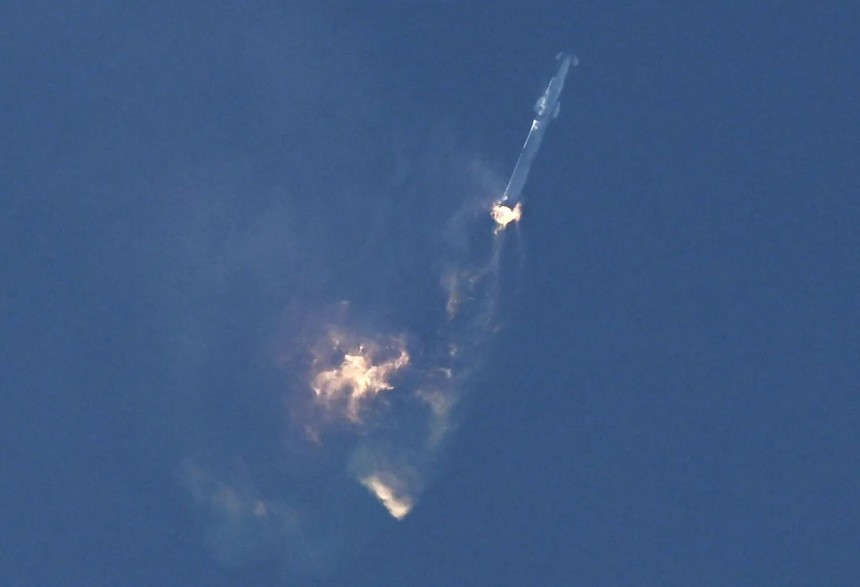On April 20th, 2023, America watched in amazement as the SpaceX Starship booster and its spacecraft roared to life and lifted off from its launch pad in Boca Chica, Texas. Little more than a few minutes later, this same 390-foot tall spacecraft was plummeting down towards Mother Earth in more pieces than most can be bothered to count. But if you check out SpaceX's own live stream of their very public failure, you won't hear gasps of abject shock or horror as you might expect.
In spite of what you might expect, SpaceX was all too happy to broadcast a background of almost thunderous applause as the first Starship to attempt an orbital flight ended more like pyro at a rock concert than a space launch. Make no mistake, watching upwards of 1,200 tons of liquid propellant go off like a fireworks show was nothing short of stunning to watch. There are no arguments there.
But from a certain point of view, the reaction to Starship's spectacular failure was even more significant in the unfolding saga of the second great space race than the explosion itself. The reason why can best be explained by pointing out how different SpaceX's modus operandi is compared to NASA's. If you ever have the privilege of talking to a legit NASA/ESA engineer as we have at autoevolution, you're bound to hear the phrase "test as you fly" in relation to the process that goes into clearing a rocket for launch.
What this means beyond the well-being of any living crew is that NASA's budget is beholden to the whims of the federal government and whatever agenda the current administration has planned. For this reason, it rarely, if ever, gives NASA even a fraction of what they would ideally receive. Ever wonder why all the amazing spacecraft concepts you see renderings of on YouTube almost never get off the drawing board? It's not for lack of vision or ambition, that's for sure.
It's almost always down to a lack of funds or, more appropriately, a lack of people willing to allocate the appropriate funds to make particularly ambitious projects a reality. So then, NASA clearly has a vested interest in keeping the space hardware that does jump off the drawing board from exploding or otherwise malfunctioning. Take Artemis I, for example, a launch that had more agonizing scrubs than a Mr. Clean commercial and launched in November of last year when it was due to happen in August as a result.
With NASA's paltry budget compared to other government programs in mind, it should be clear why Artemis I scrubbed three times before it finally got it right. If Artemis I's SLS booster rocket and Orion capsule exploded on takeoff as Starship just did, it could have spelled doom for the Artemis program entirely. That's not an exaggeration. It's worth noting that estimates peg each Artemis-spec launch of the SLS platform to cost upwards of $4.1 billion per attempt.
When NASA's entire budget for the 2023 fiscal term consists of a pool of roughly $27 billion and change, it's clear why the agency would prefer to test, test some more, then test again until the public is blue in the face before going full send on one of its launches. But when it comes to SpaceX, the exact opposite situation is the case. In a fully private-sector aerospace firm run by the most eccentric and possibly the richest man in the world at the helm, we're witnessing a new breed of strictly-uncrewed rocket test flights develop before our very eyes.
It's the dawn of a new reality where it's not the end of the world if an unoccupied test flight goes boom on live television or YouTube. If anything, being free to launch as many Starships as the FAA allows out of Boca Chica will soon make for excellent opportunities to gather real-time flight data. Static tests and computer simulations may provide scientists with an uncanny picture of what a real rocket launch might look like. But there's nothing that beats honest-to-god sensor data from all of Starship's vital sub-systems to diagnose what problems arise when things go wrong, as they did on April 20th.
So long as there isn't a living crew aboard and Elon Musk keeps writing checks, is there any reason to object? Indeed, the more times Starship test mules go wrong on launch before they start sending crews aboard, the chances of said anomalies happening on the all-important trips to the Moon and Mars go down exponentially. This unprecedented combination of engineering capability with the full commitment of one of the wealthiest men since Rockefeller means SpaceX's approach to deep space may one day look more like Kerbal Space Program than it does a traditional government space agency.
Of course, anyone who's played KSP knows that once you build a rocket and work out all the bugs through trial and error, you can do things you never thought possible. Will this translate into Starship's success? That's demonstrably harder to predict. But we do know that it wasn't just civilians watching SpaceX's live stream that Thursday afternoon. Blue Origin was watching, and NASA themselves were watching, as was evident by a tweet from its head administrator after the explosion.
But if we had to guess, even the Russian and the Chinese space programs were watching. Rest assured, all parties involved were taking notes. So don't be surprised if this balls-to-the-wall style of strictly un-crewed rocket test flights becomes the new normal. When your eccentric CEO has a side hustle selling the most popular luxury EV brand in the world, you're afforded these kinds of perks. Rest assured, the world at large was watching.
That's why despite the SLS's considerable success compared to Starship thus far, we might look back on April 20th, 2023, as one of the most significant moments in spaceflight of the 21st century. It was the day the spaceflight community collectively remembered that it's okay to fail so long as you get back up and keep on innovating.
But from a certain point of view, the reaction to Starship's spectacular failure was even more significant in the unfolding saga of the second great space race than the explosion itself. The reason why can best be explained by pointing out how different SpaceX's modus operandi is compared to NASA's. If you ever have the privilege of talking to a legit NASA/ESA engineer as we have at autoevolution, you're bound to hear the phrase "test as you fly" in relation to the process that goes into clearing a rocket for launch.
What this means beyond the well-being of any living crew is that NASA's budget is beholden to the whims of the federal government and whatever agenda the current administration has planned. For this reason, it rarely, if ever, gives NASA even a fraction of what they would ideally receive. Ever wonder why all the amazing spacecraft concepts you see renderings of on YouTube almost never get off the drawing board? It's not for lack of vision or ambition, that's for sure.
It's almost always down to a lack of funds or, more appropriately, a lack of people willing to allocate the appropriate funds to make particularly ambitious projects a reality. So then, NASA clearly has a vested interest in keeping the space hardware that does jump off the drawing board from exploding or otherwise malfunctioning. Take Artemis I, for example, a launch that had more agonizing scrubs than a Mr. Clean commercial and launched in November of last year when it was due to happen in August as a result.
When NASA's entire budget for the 2023 fiscal term consists of a pool of roughly $27 billion and change, it's clear why the agency would prefer to test, test some more, then test again until the public is blue in the face before going full send on one of its launches. But when it comes to SpaceX, the exact opposite situation is the case. In a fully private-sector aerospace firm run by the most eccentric and possibly the richest man in the world at the helm, we're witnessing a new breed of strictly-uncrewed rocket test flights develop before our very eyes.
It's the dawn of a new reality where it's not the end of the world if an unoccupied test flight goes boom on live television or YouTube. If anything, being free to launch as many Starships as the FAA allows out of Boca Chica will soon make for excellent opportunities to gather real-time flight data. Static tests and computer simulations may provide scientists with an uncanny picture of what a real rocket launch might look like. But there's nothing that beats honest-to-god sensor data from all of Starship's vital sub-systems to diagnose what problems arise when things go wrong, as they did on April 20th.
So long as there isn't a living crew aboard and Elon Musk keeps writing checks, is there any reason to object? Indeed, the more times Starship test mules go wrong on launch before they start sending crews aboard, the chances of said anomalies happening on the all-important trips to the Moon and Mars go down exponentially. This unprecedented combination of engineering capability with the full commitment of one of the wealthiest men since Rockefeller means SpaceX's approach to deep space may one day look more like Kerbal Space Program than it does a traditional government space agency.
But if we had to guess, even the Russian and the Chinese space programs were watching. Rest assured, all parties involved were taking notes. So don't be surprised if this balls-to-the-wall style of strictly un-crewed rocket test flights becomes the new normal. When your eccentric CEO has a side hustle selling the most popular luxury EV brand in the world, you're afforded these kinds of perks. Rest assured, the world at large was watching.
That's why despite the SLS's considerable success compared to Starship thus far, we might look back on April 20th, 2023, as one of the most significant moments in spaceflight of the 21st century. It was the day the spaceflight community collectively remembered that it's okay to fail so long as you get back up and keep on innovating.
